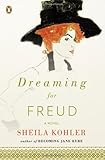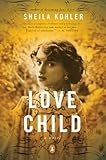Embarrassment
The Eight Stages of Life When Change May Occur
What are the eight stages and how can we overcome the inherent conflict?
Posted September 29, 2014
According to Erik Erikson there are eight main stages in our lives and each one is characterized by its own conflict.
These conflicts are:
1) Basic trust versus mistrust ( 0-18 months)
2) Autonomy versus shame and doubt ( 18-36 months)
3) Initiative versus guilt ( 3 to 5 years)
4) Industry versus inferiority( 6 to 10 Years)
5) Ego identity versus role confusion ( 11-17 years)
6) Intimacy versus isolation ( 18-40 years)
7) Generativity versus stagnation ( 40-60 years)
8) Ego integrity versus despair ( 60 years to the end of life)
Most of these stages can be studied by looking at a great story that portrays this moment of possible change. Dr William Tucker in his interesting book, “How people change” (Other Press) gives us an anthology of useful stories. Here I will pick out some of the most helpful.
“Grisha,” a story by Chekhov illustrates the second conflict: autonomy versus shame and doubt. The toddler is taken out by his nanny and exposed to the nanny’s boyfriend who embraces her, laughs at the little boy, and gives him alcohol to drink. Back home he tries to tell his mother what has happened, but she misunderstands and gives him a purgative.
In D.H. Lawrence’s “The Rocking Horse Winner” we have the third stage: guilt versus industry for the boy Paul and intimacy versus isolation for Hester his mother.
Paul realizes that his mother wishes to be richer, and that she cannot love her children. He rides his rocking horse to find the winner at the races but soon finds that his mother’s need for money is insatiable.
In James Joyce’s “ Araby” we have the fifth stage: ego identity versus confusion. Here the young boy, on the cusp of adolescence, experiences first love. He goes to the fair to procure something to give to his love but gets there too late and returns empty handed.
“The Dead” one of Joyce’s greatest stories, illustrates generativity versus stagnation. After a party, Gabriel Conroy discovers that his wife has loved another man in her youth. This revelation, though it initially brings anger and sadness enables him to connect with his past and indeed all of humanity.
Jean Rhys’s story, “Sleep it off lady” illustrates ego integrity versus despair. In this story Miss Verney is haunted by obscure fears: a run-down shed seems to be inhabited by a rat. Her neighbor called in to help accuses her of hallucinations because of her drinking. Finally her fear focuses on Deena, a neighbor’s child. One morning Miss Verney collapses outdoors. She hopes Deena will save her, but the child calls out “Sleep it off Lady” and leaves her to her fate.
Each one of these stories, Dr. Tucker maintains, tells us all we need to know about ourselves. We are no different from little Grisha, or the narcissistic Gabriel. These stories enrich our personal and professional lives with an understanding of human nature which comes as much from the author’s conscious as unconscious mind.
Sheila Kohler is the author of thirteen books amongst them "Cracks," "Love Child" and "Becoming Jane Eyre" and most recently "Dreaming for Freud."
 Dreaming for Freud: A Novel by Sheila Kohler Penguin Books buy now
Dreaming for Freud: A Novel by Sheila Kohler Penguin Books buy now Love Child: A Novel by Sheila Kohler Penguin Books buy now
Love Child: A Novel by Sheila Kohler Penguin Books buy now


